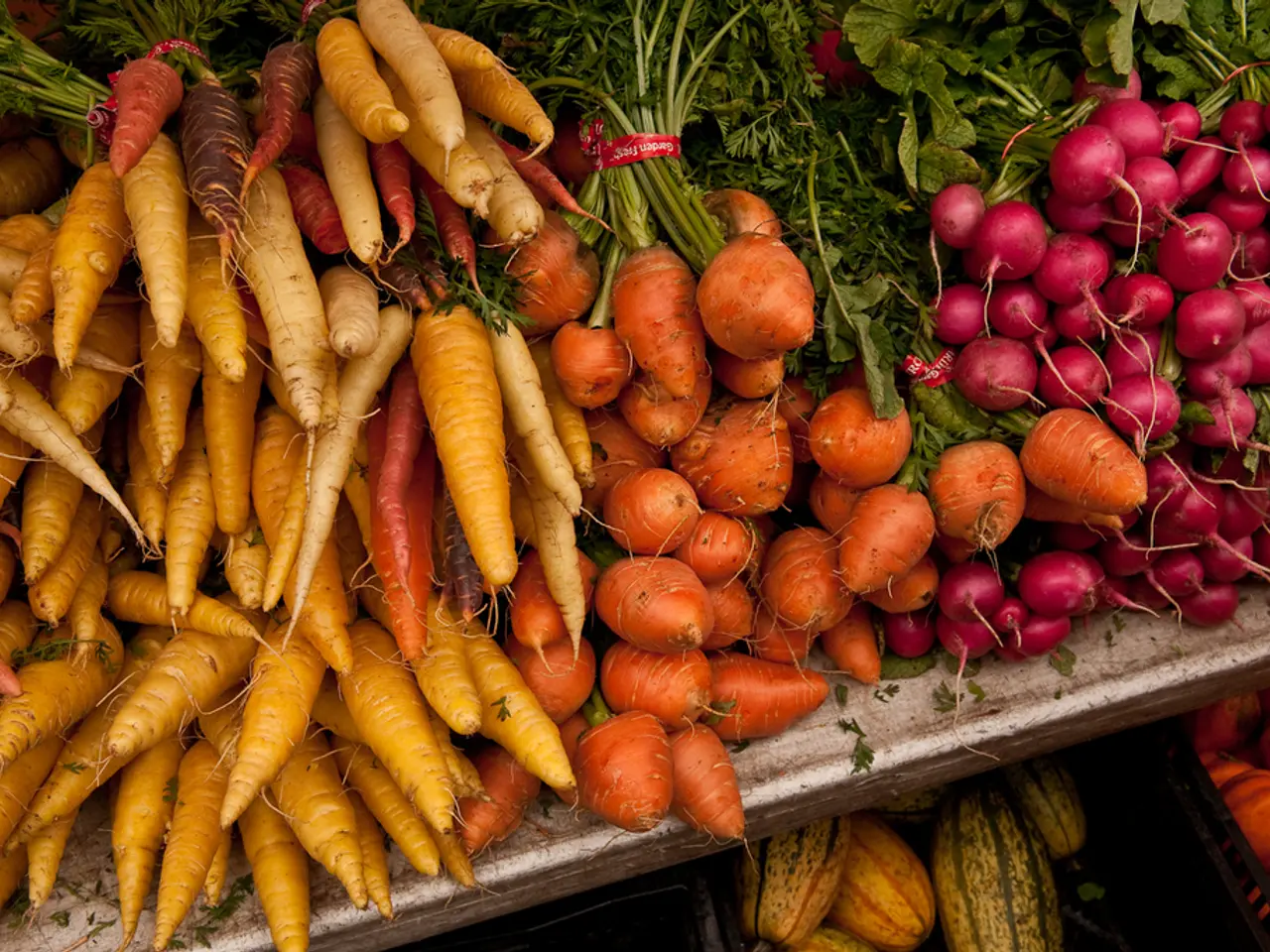Detailed Guide on Home Vegetable Garden Cultivation Techniques
Organic Vegetable Gardening: A Guide to Natural Soil Enrichment and Pest Control
In the world of organic vegetable gardening, understanding soil types and employing natural methods to improve soil quality are key to a bountiful harvest. Here's a breakdown of essential techniques and practices to get you started.
Soil Types and Soil Preparation
There are three main soil types: sand, clay, and silt, each with its strengths and weaknesses. Sand drains quickly but doesn't hold nutrients well, while clay retains moisture but can become too compacted. Silt, a mix of sand and clay, holds nutrients better than sand. Soil preparation involves loosening the soil and mixing in compost to improve fertility and structure.
Improving Soil Quality
Improving soil quality is about adding natural materials like compost, mulch, and crop rotation. Key ingredients for healthy soil include compost, worm castings, bone meal, and green manure. Proper drainage and soil grading are also crucial to avoid erosion and standing water, promoting healthier soil.
Pest Management in Organic Gardening
Effective pest control in organic vegetable gardening uses natural methods like companion planting, homemade sprays, diatomaceous earth, and neem oil. Identifying pests is crucial for effective control. For example, small, green bugs found on the undersides of leaves (known as aphids) make plants sticky. Slimy trails on the soil and leaves indicate the presence of slugs and snails, while tiny webs or yellow spots on leaves are signs of spider mite infestation.
Smart Planting Techniques
Smart planting techniques include selecting plants adapted to your hardiness zone and using companion planting to enhance growth, improve soil nitrogen, suppress weeds, and deter pests. Proper timing such as waiting to mulch until after soil warms can optimize growth conditions.
Tools for the Organic Vegetable Gardener
A seed spreader helps in planting seeds evenly, while a garden trowel is used for digging small holes for seeds. Choosing a spot with plenty of sunlight and good soil drainage is crucial for planting seeds. A watering can is essential for keeping plants hydrated.
In summary, organic vegetable gardening benefits from natural soil enrichment, understanding local soil and climate conditions, ecological pest control through companion planting, and thoughtful planting strategies tailored to your environment. With these techniques in mind, you're well on your way to a thriving organic vegetable garden.
[1] Soil Science Society of America. (n.d.). Soil types. Retrieved from https://www.soils.org/soils-in-society/soil-resources/soil-types
[2] National Gardening Association. (n.d.). Organic gardening basics. Retrieved from https://www.garden.org/learn/articles/view/3537/
[3] University of California Agriculture and Natural Resources. (2016). Rice hulls in the garden. Retrieved from https://ucanr.edu/sites/sustainableagriculture/files/266438.pdf
[4] Cornell University Cooperative Extension. (n.d.). Soil testing. Retrieved from https://whatsthesoiltest.com/
- To maintain soil quality in organic vegetable gardening, one might consider adding natural materials like compost, mulch, and rice hulls, as well as green manure, bone meal, and worm castings.
- A well-established home-and-garden practice that supports health-and-wellness is proper drainage and soil grading, which can prevent erosion, standing water, and promote healthier soil.
- Pest control strategies in organic vegetable gardening often involve identified methods, such as companion planting, homemade sprays, diatomaceous earth, and neem oil, to deter harmful pests like aphids, slugs, snails, and spider mites.
- Cultivating a long-term lifestyle of organic vegetable gardening includes smart planting techniques, like selecting plants suited to your hardiness zone, employing companion planting for enhanced growth, and optimizing planting times to promote optimal growth conditions.



